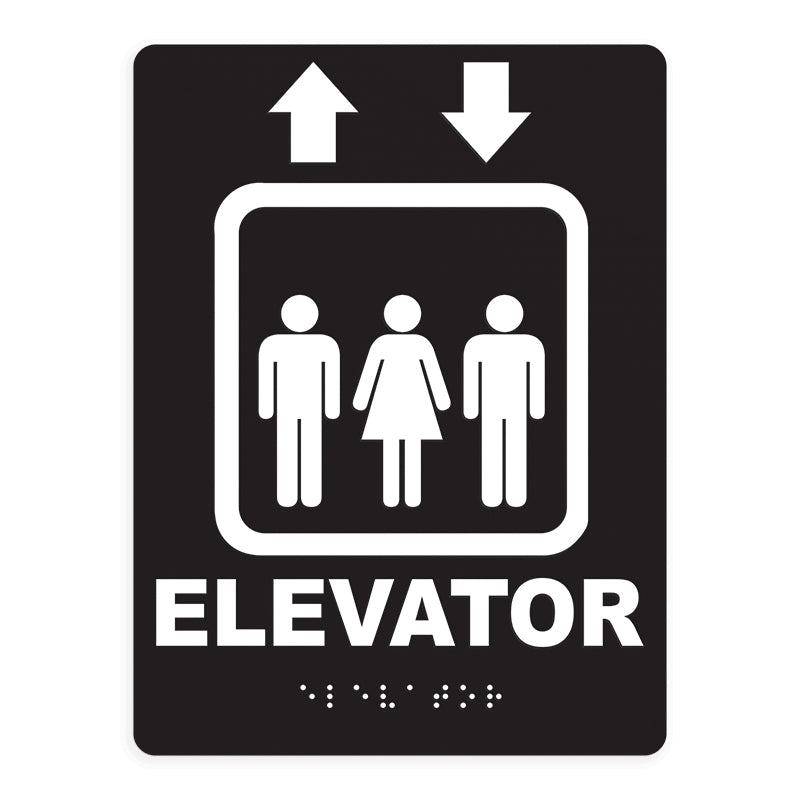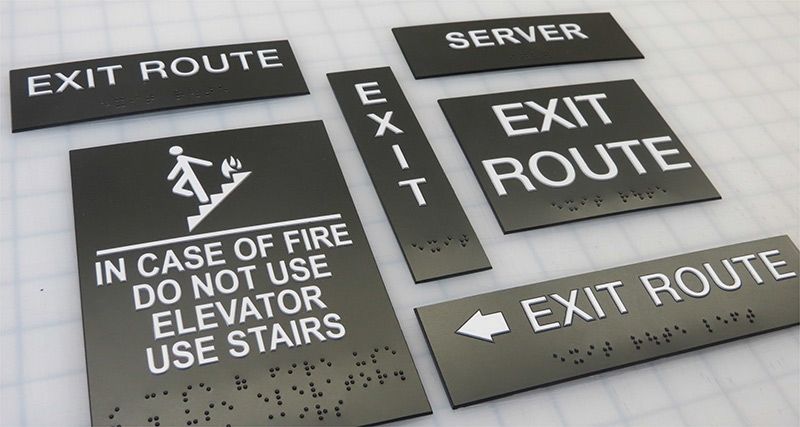ADA Signage: Ensuring Availability and Compliance in Public Spaces
ADA signage plays an indispensable role in ensuring ease of access and conformity within public spaces, significantly contributing to a comprehensive setting for individuals with specials needs. As we check out the nuances of ADA signs, from responsive functions to create intricacies, it's essential to consider just how these aspects coalesce to maintain the civil liberties of all individuals.
Significance of ADA Signage
In modern society, the value of ADA signs expands beyond plain conformity with legal mandates to embody a dedication to inclusivity and ease of access for all individuals. These indications are vital in developing atmospheres where people with impairments can navigate public rooms with the same simplicity and independence as those without impairments. By giving standardized and clear details, ADA signage makes certain that everybody can access facilities, services, and information without barriers.
The importance of ADA signage depends on its capacity to enhance the lifestyle for individuals with specials needs by promoting equal access. It gets rid of the obstacles that might or else impede their capability to take part totally in community life. These indications serve as visible indications of an organization's devotion to diversity and equal rights, showing more comprehensive social values that promote the legal rights and self-respect of all individuals.
Additionally, ADA signage plays a critical role in public safety and security. By assisting individuals to leaves, toilets, and other crucial facilities, it guarantees that all people, no matter of physical capability, can leave securely throughout emergencies. In recap, ADA signage is not just a governing need however a powerful tool for cultivating a fair and inclusive society.
Crucial Element of Conformity

Positioning is crucial; indicators need to be mounted in areas that are quickly noticeable and reachable. Normally, signage must be mounted in between 48 and 60 inches from the ground to guarantee access for both standing and wheelchair customers. Responsive elements, such as Braille, are vital for people with aesthetic problems, providing essential info in a non-visual format.
High-contrast colors between the text and history are needed to improve readability for individuals with reduced vision. The ADA mandates details contrast proportions to make certain clearness. In addition, personality size is an essential consideration, with minimal height demands dictated by the seeing distance to make certain readability from different angles.
Design Considerations for Accessibility
Designing accessible signs requires a careful approach to ensure it satisfies the needs of all users, especially those with impairments. The size of the message is just as essential, with ADA guidelines recommending a minimal height based on viewing range to make certain readability.
Contrasting shades in between text and history are essential for presence, particularly for people with aesthetic disabilities. Additionally, tactile components, such as Braille and elevated characters, are crucial for people that are blind or have reduced vision.
Additionally, the positioning of signage plays a considerable role in access. Signs need to be set up in locations that are unblocked and conveniently reachable. Guaranteeing that signage is installed at proper heights and angles enables all individuals, including those using mobility devices, to communicate with them properly.
Typical Blunders to Avoid

One more widespread mistake is the incorrect positioning of signs. ADA guidelines define exact elevation and place needs to make sure that signs are conveniently noticeable and obtainable by all individuals, explanation including those utilizing mobility devices. Overlooking these guidelines not just obstructs ease of access however additionally risks non-compliance with lawful criteria.
Furthermore, not enough comparison in between text and history is a regular oversight. Appropriate comparison is important for readability, specifically for individuals with low vision. Designers occasionally choose colors that are visually appealing but lack the needed comparison, making the message difficult to determine.
Finally, some developers fall short to incorporate tactile elements, such as Braille, which are essential for individuals that are blind. Leaving out these her response features not just causes non-compliance with ADA regulations however additionally restricts accessibility for a section of the population that depends on tactile information.
Future Trends in Signs
Advancements in modern technology and increasing recognition of inclusivity are shaping the future fads in signage design. As culture ends up being a lot more aware of varied needs, the integration of smart technologies right into signage is getting traction. Digital signs, for example, is evolving to include real-time updates and interactive functions, which can be critical in offering dynamic info in public rooms. These signs frequently incorporate touch displays or gesture-based controls, making it possible for individuals to browse material customized to their details requirements.
Another arising pattern is the usage of augmented reality (AR) to boost user experience. AR-enabled signs can overlay digital details onto the physical atmosphere, providing visually impaired people with auditory or haptic responses. ADA Signs. This modern technology not only enhances accessibility yet additionally produces an appealing experience for all customers
Sustainability is additionally a considerable variable influencing signs trends. Environmentally friendly products and energy-efficient lighting solutions are being focused on to line up with global ecological goals. Advancements in materials science are leading to the development of more sturdy and weather-resistant indications.
Final Thought
ADA signage plays a vital function in assuring accessibility and conformity within public spaces by incorporating tactile aspects, high-contrast colors, and strategic positioning. The adherence to ADA standards not only facilitates risk-free navigation for people with specials needs however additionally represents a company's commitment to variety and inclusivity. By staying clear this website of common errors and accepting future trends, public rooms can proceed to advance these worths, guaranteeing that the legal rights and dignity of all individuals are appreciated and maintained.
ADA signs plays an indispensable function in assuring access and conformity within public rooms, dramatically adding to an inclusive environment for people with disabilities. As we check out the nuances of ADA signage, from responsive attributes to design ins and outs, it's vital to think about just how these aspects integrate to copyright the rights of all customers.In contemporary society, the importance of ADA signage prolongs past simple compliance with legal mandates to symbolize a dedication to inclusivity and accessibility for all individuals. By providing standard and clear info, ADA signs makes certain that everybody can access facilities, solutions, and details without obstacles.
ADA signage plays a crucial role in assuring access and compliance within public areas by incorporating responsive aspects, high-contrast shades, and critical positioning. (ADA Signs)